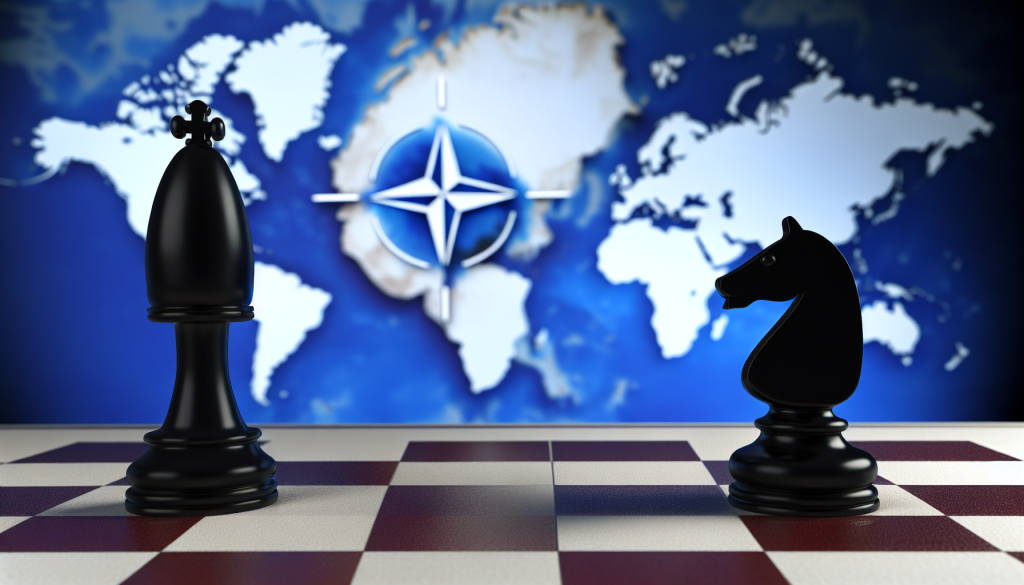The Baltic Fait Accompli: Understanding the Dynamics of a Potential Russia-NATO Conflict
Recent escalating incidents—such as Russian drones crossing into Poland and MiG-31s violating Estonian airspace—have reignited discussions surrounding a potential conflict between Russia and NATO. These events prompt critical questions: How could a war between Moscow and the transatlantic alliance begin? And what would need to occur for a localized incident to spiral into broader warfare?
Incidents Leading to Tension
On September 9, 2025, a significant incident occurred when at least 19 Russian drones crossed into Polish airspace, aimed at Ukrainian targets. This unforeseen breach caught Polish air defense forces off-guard. Just days later, on September 19, three Russian Mikoyan MiG-31 fighter jets entered Estonian airspace, prompting immediate calls for consultations under Article 4 of NATO’s founding charter. Article 4 allows member states to convene when a nation perceives a threat to its territorial integrity.
Estonian Foreign Minister Margus Tsahkna described the incursion as a “heavy violation by Russia,” highlighting that incidents like these reflect Russia’s ongoing pressure on NATO unity. The strategic response of NATO has been to uphold its protocols and maintain dialogue, but the underlying tension remains palpable.
Probing NATO’s Resolve
Moscow appears to be employing a strategic approach that continuously tests the boundaries of NATO’s response capabilities. By probing the airspace and the political will of member states, Russia aims to create scenarios that challenge NATO’s collective defense principles, specifically Articles 4 and 5, which outline responsibilities in the event of an attack on a member state.
The objective behind such provocations may not solely be to flare tensions but to assess NATO’s resolve and determine its operational readiness. The Eastern flank, particularly the Baltic states—Estonia, Latvia, and Lithuania—becomes a focal point. Each of these nations stands as a frontline defense, inherently carrying greater stakes in the event of a conflict.
The Philippines of NATO
Analyzing the balance of power between NATO and Russia, the sheer numbers often favor NATO when considering military expenditures and technology. However, the efficacy lies in how those resources are utilized. The fragmented nature of Europe’s defense industries complicates NATO’s cohesiveness, with members operating an overwhelming variety of incompatible weapons systems. This inefficiency could create vulnerabilities that an aggressive assault could exploit.
Russian President Vladimir Putin likely recognizes NATO’s intricate dynamics. While not entirely devoid of military capability, several NATO nations, especially in Europe, grapple with ammunition shortages and insufficient air defense systems. The potential reality of such an imbalance suggests that a conflict may initiate in unforeseen ways, leveraging NATO’s weaknesses rather than commencing from a traditional battlefield.
A Quick and Silent Offensive
Hypothetical scenarios about how a conflict might start often bypass the traditional notion of a full-scale invasion, resembling historical engagements of the past. Instead, the model many analysts foresee is a “fait accompli”—a quick, surprising operation aimed at overtaking a Baltic state before NATO can effectively respond.
This might manifest in swift electronic warfare operations, drone strikes on critical infrastructure, and the deployment of covert forces. Such an approach could sow confusion and panic, allowing Russia to seize territory with minimal initial engagement. The objective would be to fracture NATO’s unity by compelling member states to choose between capitulating to Russian demands or escalating to full-scale war.
The Weakest Link in the Chain
The Baltic states may find themselves in a precarious position. A rapidly executed Russian offensive could catch a less prepared nation off guard, plunging it into a crisis. Ukraine’s military has demonstrated its capability to confront Russian aggression, but the Baltic states do not possess similar combat-ready forces. Therefore, NATO’s bigger players, including Germany, may hesitate to engage in a conflict to defend what they see as vulnerable territory.
As noted by political analysts, the implications of such an invasion extend beyond the immediate military realm. The alliance itself could face an existential crisis—either allowing Russia to annex a state or mobilizing for an unwinnable conflict without sufficient preparation.
Navigating a Balance of Deterrence
Given the complexities illustrated, NATO stands at a crossroads. The alliance must balance its deterrent strategy with the actual military readiness of its member states. The fact that some nations are ready to defend themselves while others may not mirrors the tenuous alliances within NATO itself.
The urgency of military preparedness cannot be overstated. Should Russia execute a surprise maneuver against a Baltic state while simultaneously embroiled in Ukraine, NATO’s response will determine the alliance’s credibility in the eyes of its member nations.
As history has shown, actions on the ground can escalate quickly. A conflict that begins as a localized incident could potentially spiral into a wider confrontation, reshaping the balance of power in Europe and beyond.
Future Implications
Geopolitical analysts speculate that this precarious situation could unfold at any moment, raised alarm levels necessitating immediate action. NATO’s collective response to these developments will draw scrutiny not only from global powers but also from its own member states, who will be watching how effectively their long-standing alliance preempts or responds to such threats.
As the situation evolves, discerning strategic clarity will be essential for NATO. It will seek to deter aggression while maintaining unity among disparate member states. The outcome of such dynamics remains to be seen, but the stakes have never been higher in the intricate relationship between Russia and NATO.

